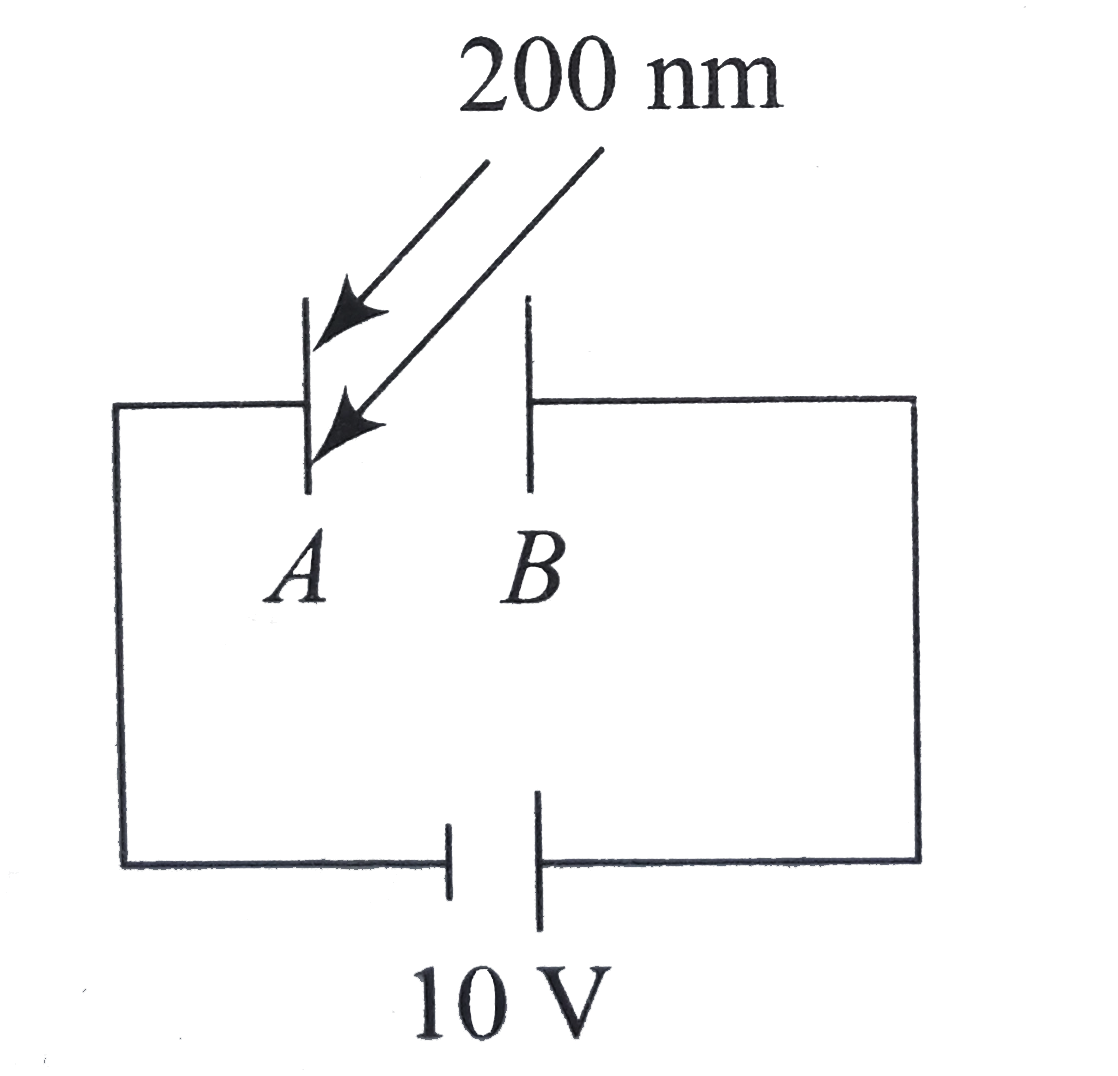
In Fig. electromagnetic radiations of wavelength 200nm are incident on a metallic plate A. the photoelectrons are accelerated by a potential difference of 10 V. These electrons strike another metal plate B from which electromagnetic radiations are emitted. The minimum wavelength of emitted photons is 100nm. If the work function of metal A is found to be (×x10−1)ev, then find the value of x. (Given hc=1240eV nm)
The correct Answer is:4
Step by step video, text & image solution for In Fig. electromagnetic radiations of wavelength 200nm are incident on a metallic plate A. the photoelectrons are accelerated by a potential difference of 10 V. These electrons strike another metal plate B from which electromagnetic radiations are emitted. The minimum wavelength of emitted photons is 100nm. If the work function of metal A is found to be (xxx10^-1)ev, then find the value of x. (Given hc=1240eV nm) by Physics experts to help you in doubts & scoring excellent marks in Class 12 exams.
Topper's Solved these Questions
- BOOK - RESONANCECHAPTER - ATOMIC PHYSICSEXERCISE - Exercise-2 part-III one or more than one options correct type14videos
ATOMIC PHYSICS
- BOOK - RESONANCECHAPTER - ATOMIC PHYSICSEXERCISE - Exercise-2 Part-III : Comprehension12videos
ATOMIC PHYSICS
- BOOK - RESONANCECHAPTER - ATOMIC PHYSICSEXERCISE - Exercise (2) Only one option correct type30videos
ATOMIC PHYSICS
- BOOK - RESONANCECHAPTER - ALTERNATING CURRENTEXERCISE - HIGH LEVEL PROBLEMS11videos
ALTERNATING CURRENT
- BOOK - RESONANCECHAPTER - CAPACITANCEEXERCISE - High Level Problems16videos
CAPACITANCE
Similar Questions
In the figure shown, electromagnetic radiations of wavelength 200nm are incident on the metallịc plate A. The photoelectrons are accelerated by a potential difference of 10V. These electrons strike another metal plate B from which electromagnetic radiations are emitted. The minimum wavelength of the emitted photons is 100nm. Find the work function of the metal A (in eV). (Use hc=12400eVAo,Rch=13.6eV)
'(##CEN_KSR_PHY_JEE_CO28_E01_022_Q02##)' FIGUREView SolutionMetal surface emits photoelectrons when light of wavelength 400 nm is incident on it. Calculate the work function of the metal if stopping potential is 0.5 V.
View Solution
Knowledge Check
- Question 1 - Select One
Electromagnetic radiations of wavelength 2000Å are incident on a metal surface which has a work function 5.01eV The stopping potential for the given setup is
A1.19 eVB6.19 eVC3.19 eVD4.19 eV - Question 2 - Select One
The radiation of wavelength 332 nm is incident on a metal of work function 1.70 eV. The value of the stopping potential will be
A0.70 eVB1.14 eVC1.68 eVD2.06 eV - Question 3 - Select One
Energy required to stop the ejection of electrons from certain metal plate was found to be 0.2 eV when an electromagnetic radiation of 330 nm was made to fall on it the work function of the metal is
A0.32×10−19 jB6×10−19jC5.68×10−19 jD3.82×10−27
Ligth of wavelength 4000Å is incident on a metal plate whose work function is 2eV. What is maximum kinetic enegy of emitted photoelectron ?
View SolutionRadiation of wavelength 310 nm is incidenton a metal surface of work function 1eV. Find maximum speed of photoelectrons emitted . ( Closed value )
View SolutionLight of wavelength 500nm is incident on a metal with work function 2.28eV. The de Broglie wavelength of the emitted electron is
View SolutionThe kinetic energy of most energetic electrons emitted from a metallic surface is doubled when the wavelength λ of the incident radiation is changed from 400 nm to 310 nm. The work function of the metal is
View SolutionRadiation of energy 6.5 eV is incident on a metal surface whose work function is 4.2 eV. What is the potential difference that should be applied to stop the fastest photoelectrons emitted by the metal surface ?
View Solution

